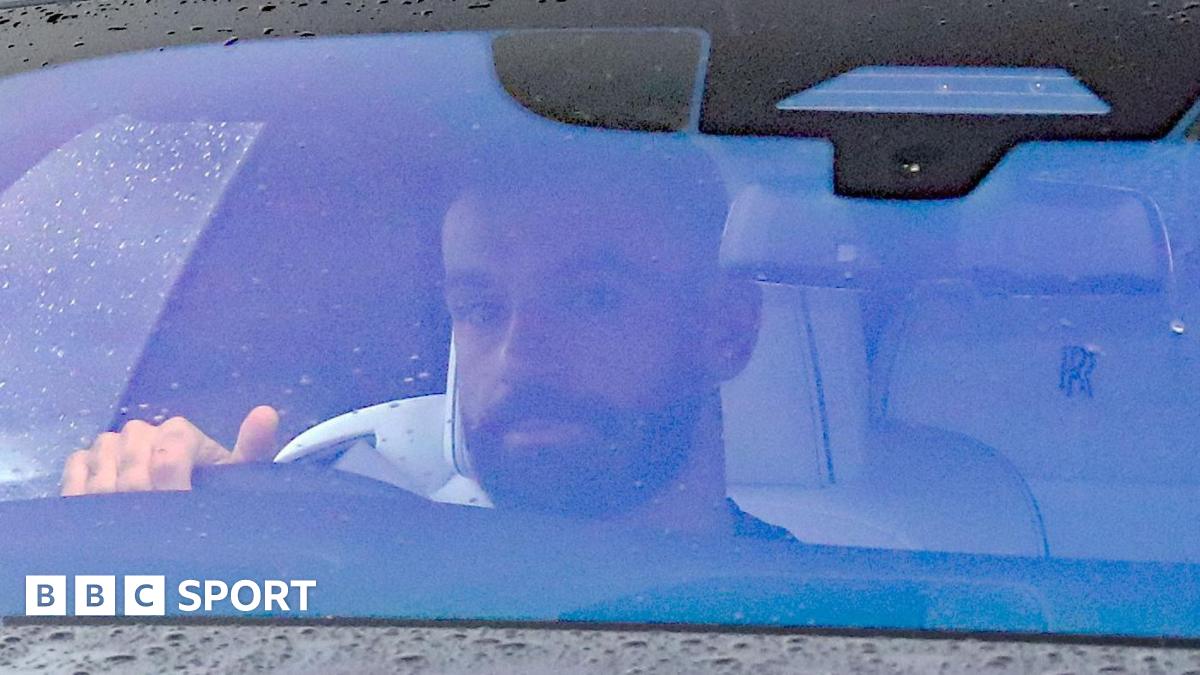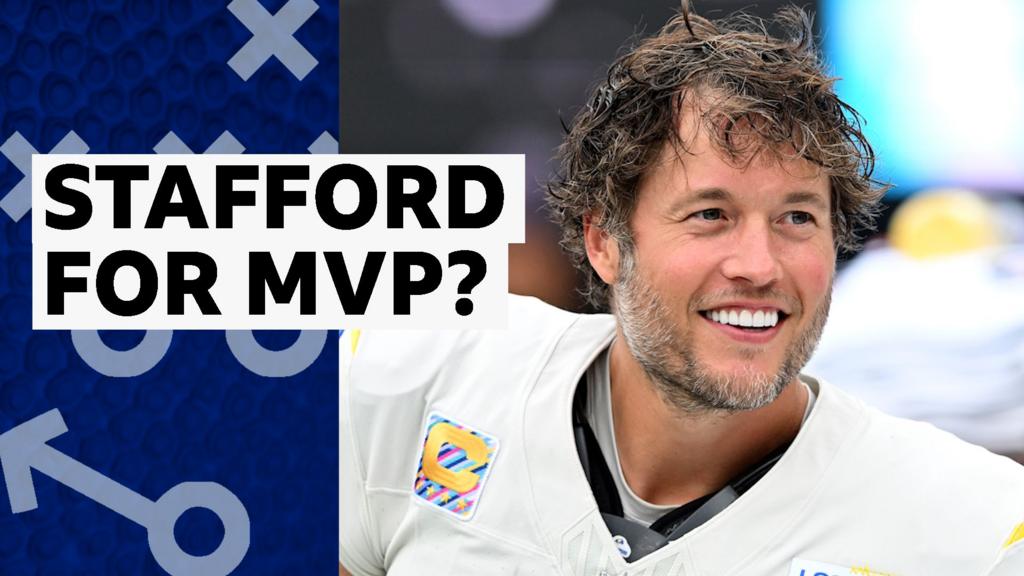Former F1 driver Jolyon Palmer, who left Renault during the 2017 season, is part of the BBC team and offers insight and analysis from the point of view of the competitors.
The Russian Grand Prix will not go down as a classic.
Lewis Hamilton’s penalties killed off what could have been an intriguing battle for the race win, and there was precious little action down the field.
But a boring race on a bland track has nevertheless brought to the fore a number of key themes emerging in Formula 1 as the season heads towards its final phase.
Hamilton simply punished for breaking rules – again
Hamilton feels like public enemy number one with governing body the FIA right now, after receiving a penalty that cost him a probable race win for the second time in three races.
With his lead at the top of the championship seemingly unassailable even at this early stage, Hamilton came out after the race with the bold claim that the race stewards were “trying to stop me”.
The reality is that Hamilton and Mercedes have simply broken the rules both times.

In Monza, Mercedes and Hamilton pitted when the pit lane was closed and received a penalty for it – the same one as Antonio Giovinazzi’s Alfa Romeo was given for the same infringement.
None of Hamilton’s immediate rivals made the same mistake in Monza and nobody else in the field broke the rules by doing a practice start at the exit of the pit lane in Sochi.
The regulations stated that drivers must do practice starts on the right after the pit-lane exit lights. Mercedes argued that there was no designated spot – in terms of anything delineated by markings – but they know the rules define a specific place, and everyone else managed to use it.
I do sympathise with Hamilton, because it is not necessarily his fault in both of these instances.
His Mercedes team let him down by telling him to pit in Monza, and when Hamilton asked on the team radio whether he could do a practice start from further down the pit lane in Russia, his race engineer Pete Bonnington gave Hamilton the green light to do it. The problem was, Hamilton went a lot further down the pit lane than the team had expected.
It’s harsh for him to lose two races in this manner, and the fact that he picked up penalties for both infringements (doing a practice start in the wrong place on consecutive laps) will only grate that bit more, and perhaps seem over the top.
The fact is, though, that Hamilton wanted to do a practice start there, rather than in the designated practice start box, because it was less grippy than the practice area, and therefore more like the grid slot he would be starting on in the race. It would give him a better feel for the start.
If this was allowed, everyone would do it. The practice-start box has more rubber down because that is the place drivers can practise their starts. So every other driver who complies with the regulations does their starts there and little by little rubber from their rear tyres is deposited on to the asphalt.
Sure, it’s not always ideal for race-start preparation, but they are the rules and Hamilton was the only one to do something different. He did it twice, and he was penalised accordingly.
In summary, I don’t think the FIA stewards are against Hamilton, they are simply applying penalties for breaches of the rules.
Sometimes they seem harsh, but I’m sure Haas were arguing the same in Hungary when both drivers were given the same penalty as Hamilton for being told to pit on the formation lap.
All these instances are procedural infringements which leave little wriggle room in terms of application of the rules. In that sense, they are unlike racing incidents, which can be argued against as they aren’t always black and white.
A bad track gives a bad race
The Sochi Autodrom winds its way around the 2014 Winter Olympic park. Combined with its location on the shores of the Black Sea, with mountains as a backdrop, it should create a nicely atmospheric setting.
But looks can be deceptive. The reality is that it’s a circuit that lacks much character. It’s almost entirely flat, and every corner seems almost the same – an approximately 90-degree turn. The only exceptions are the slightly trickier – but still 90-degree – chicanes of Turns 13-16.
It’s certainly not any driver’s favourite venue.
This year, Sochi followed on from the debut of Italy’s Mugello track, which I praised in my last column for its old-school characterful feel. In that context, I’d argue the new-school sanitised feel of Sochi did little to help the excitement.

There have been seven Russian Grands Prix at Sochi now, and it has yet to produce a properly decent race. Overtaking is tricky and cars often spread out, despite the track having a high chance of a safety car.
Statistically, that safety-car probability will be even higher next year, after first-lap crashes for McLaren’s Carlos Sainz and Racing Point’s Lance Stroll. But the safety car on Sunday did little to spice up the action – unlike in Mugello.
Turn Two at Sochi has come under some scrutiny, specifically for the way the policing of track limits and rules about rejoining the track led to incidents and penalties.
Britain’s George Russell labelled the corner “one of the worst on the calendar”. And with a combination of track-limits madness and a lack of overtaking it’s a thought that many share.
Sainz hit the wall in the run-off area trying to go too fast though the bollards before rejoining the track, and Renault’s Daniel Ricciardo and Red Bull’s Alex Albon received penalties for not going through the run-off in the correct manner. Drivers are meant to lose heaps of time by swerving left to go through the bollards next to the wall Sainz hit, even if they slide off track by only a few millimetres.
Race director Michael Masi admitted after the race that there was room for improvement here.
At the end of Sochi’s kilometre-long main straight, a tighter corner may help overtaking and also perhaps reduce the corner-cutting issue that the following kink causes. Several drivers have spoken about this, and perhaps a change here can produce some better Russian Grands Prix in the future.
In defence of this year’s race, without Hamilton’s penalty, it may have been set up for a good race with offset tyre strategies between the Mercedes drivers, but we were denied a chance to see that play out.
Perez shining in adversity
Sergio Perez is on the back foot because his seat at Racing Point has been taken by Sebastian Vettel for next season and he is looking for a drive in 2021.
But he is putting in some good performances in the face of adversity to solidify his reputation and plant himself firmly on the radar of other teams.
For the second race in a row, Perez has had to race a car without new upgrades, after they were once again given to team-mate Lance Stroll following his crash in Mugello.
Despite that, Perez was best of the rest in both qualifying and the race in Russia, and well ahead of Stroll. He beat fifth-placed Ricciardo by 22 seconds – pretty much a full pit stop.
He has had a public falling out with the team after being dropped at the end of the season, despite having a contract in place. He has clearly felt poorly treated by a team he helped save a couple of years ago by taking them into administration and forcing a sale to Lawrence Stroll.
In spite of this, Perez is capable of delivering good results, and his fourth place is a demonstration that he does deserve a place in a decent car next season as well.
Vettel counting down the days

Next season can’t come soon enough for Vettel. Ferrari have a poor car this season and the four-time champion has never looked comfortable in it.
Team-mate Charles Leclerc has pulled a few star performances out of the Ferrari and on Sunday he finished a very credible sixth from 11th on the grid.
In contrast, Vettel had another weekend to forget. He crashed in qualifying while trying to make up a 0.4-second deficit to Leclerc, and then never made an impact in the grand prix after a long first stint.
The Ferrari is certainly a handful with which Vettel is struggling to make any progress, but on top of that his relationship with the team has soured in a similar way to Perez’s at Racing Point.
There has been needle between Vettel and team principal Mattia Binotto all season long since it was confirmed Vettel hadn’t retained his drive.
Vettel doesn’t seem to trust the Ferrari strategists at all this year – and this is not the first season in which that has been apparent. He is debating and often overriding some of their in-race calls. But more importantly he seems to have lost his usual mojo for racing and performance. It almost looks as if he is seeing out this year in a holding pattern.
I’m sure a fresh challenge at Aston Martin will reinvigorate Vettel and he probably can’t wait for it to come around already.
Ricciardo puts heat on Ocon
Ricciardo has been outstanding this season, and produced another excellent drive in Russia.
When he was given a five-second penalty for exceeding the track limits at Turn Two, his radio message spoke volumes for his confidence. “Yeah, that’s my bad; I’ll make up for it,” he said, adding: “I’ll drive faster.”
He is driving the wheels off his Renault and has been unlucky not to be on the podium already this season with fourth places at Silverstone, Spa and Mugello.
Ricciardo is making it a very tough return season for Esteban Ocon, a young French star who has seemed destined for greatness.
Ocon was seen as a man of the future by many after beating Max Verstappen to the European Formula Three title on their way up through the ranks, and he impressed for Force India against Perez in the first phase of his F1 career.
Ricciardo is showing top-class driving in a midfield team, but if Ocon was thinking things might get easier when it was announced the Australian would be off to McLaren for next year, he may have been mistaken.
Fernando Alonso is returning to Renault to fill Ricciardo’s shoes in 2021, and with the Spaniard’s recent visit to the team’s factories and insistence on being closely in the loop through the remainder of this year as well, it seems he could be at least as stiff competition for Ocon.
If Alonso comes back at somewhere near the level he left F1 a couple of years ago, then Ocon will need to raise his game in the remaining races and through the winter to not be left behind.
He only has to look at the podium interviewer last weekend to see the risks. Stoffel Vandoorne was the man with the microphone. He was dropped from F1 after a tough season in 2018 against Alonso
Ocon has had promising moments but is yet to look fully on top of things in 2020.




















